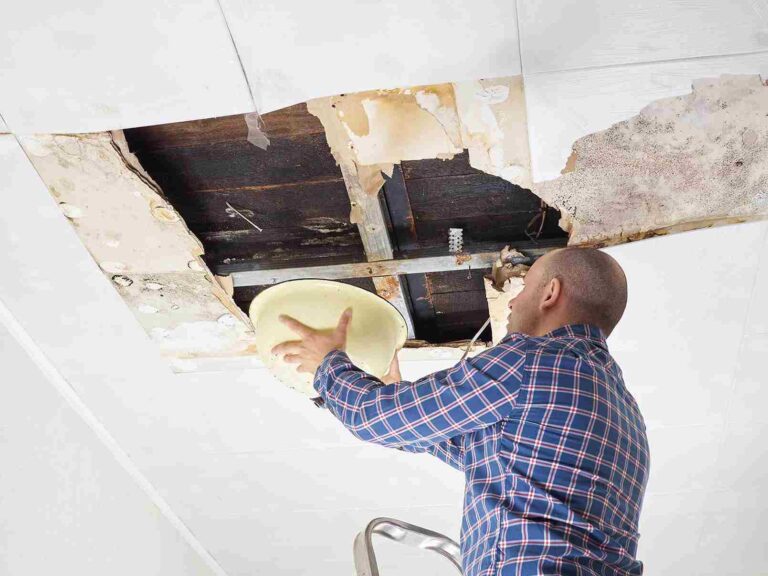Water leaks can trash your home faster than almost anything else.
One minute you’ve got a little drip, and the next thing you know, your ceiling’s caving in and your favorite chair is soaked through.
But here’s the good news: you can bring your place back to life with the right approach.
I’ve seen hundreds of homes bounce back from serious water damage, and the secret isn’t just drying things out—it’s restoring both the bones of your house and the style that makes it yours.
Let’s walk through exactly how to tackle this mess, step by step, so you can get your home looking even better than before that pipe decided to burst.
Why To Restore Style And Structure After The Leak?
Nobody wants to live in a half-fixed house.
Water damage hits both your home’s structure (the stuff that keeps it standing) and its style (the stuff that makes it feel like yours).
Skipping either part leaves you with problems down the road—maybe hidden moisture leading to mold, or rooms that just don’t feel right anymore.
Assessing the Damage
First thing you gotta do is figure out what you’re dealing with.
Don’t just look at the obvious wet spots.
When thinking about assessment, I’m considering how water travels in unpredictable ways—it follows the path of least resistance, which means damage often extends far beyond what’s visible.
You need to check under floors, behind walls, and above ceilings.
For execution, grab a flashlight and moisture meter if you have one.
Look for water stains, bubbling paint, warped wood, and that musty smell.
Press on surfaces to check for softness. Take pictures of everything for insurance.
Pro tip: Turn off the power in wet areas before investigating.
Water and electricity don’t mix.
Also, specialized services like water damage restoration Dallas TX can use thermal imaging cameras to spot hidden moisture you might miss.
Stopping Further Damage
You’ve got to stop the bleeding before you can heal the wound. Find that leak and shut it down.
This step matters because continuing water exposure will undo all your repair work and lead to more extensive damage.
Identifying the source might require some detective work, especially with pipes inside walls.
To execute this: First, turn off your main water supply.
If it’s a burst pipe, you’ll need a plumber.
For roof leaks, temporary tarping might be necessary until permanent repairs happen.
Remove standing water with a wet vac or mop, and start air circulation with fans.
A handy trick: If you can’t find the leak source, watch your water meter.
If it’s still moving when all faucets are off, water’s escaping somewhere.
And don’t forget to document everything for insurance claims before you start fixing things.
Structural Restoration
Now comes the heavy lifting—fixing the bones of your house.
This step forms the foundation for all the pretty stuff later.
Compromised structure isn’t just unsightly—it’s unsafe and can lead to bigger problems down the road.
For execution: First, remove damaged materials like soggy drywall, insulation, and rotted wood. Let the framing dry completely—this might take days with good air circulation.
Replace any compromised structural elements before closing walls back up.
Important safety note: If your house is older, be careful with demo work—you might encounter lead paint or asbestos.
And always check that wood framing is truly dry (below 15% moisture content) before closing up walls, or you’re just trapping trouble inside.
Restoring Interior Style
This is where your house starts feeling like home again.
When I think about this step, I recognize it’s not just about aesthetics—it’s about psychological recovery too.
Your surroundings affect your mood and sense of normalcy after a disaster.
For execution: Start with walls and ceilings—fresh drywall, primer, and paint work wonders.
Replace damaged flooring, being careful to match existing materials if doing partial replacements. Consider this an opportunity to update outdated elements.
Smart approach: Save what you can. Sometimes hardwood floors can be dried and refinished rather than replaced. Cabinets might just need new doors rather than full replacement.
This saves money and preserves the character of your home.
Mold Prevention and Indoor Air Quality
The hidden enemy after water damage is mold, and it’s no joke.
Mold isn’t just gross—it’s a serious health risk that can cause respiratory problems and allergic reactions. Prevention is much easier than remediation.
For execution: Use mold-resistant materials when rebuilding, especially in areas prone to moisture.
Install proper ventilation in bathrooms and kitchens.
Consider using air purifiers during and after restoration.
A simple trick that works wonders: Add a cup of white vinegar to your washing machine when cleaning hacks fabrics affected by water damage.
It helps kill mold moisture spores.
Also, keep humidity levels in your home between 30-50% using dehumidifiers if necessary.
Emotional and Financial Recovery
The stress of water damage goes beyond just the physical mess.
This aspect is often overlooked, but dealing with insurance, contractors, and displacement from your home takes a mental toll.
Financial strain adds another layer of stress to an already difficult situation.
For handling this: Create a detailed inventory of damaged items with photos.
Keep all receipts for repairs and replacements.
Be persistent but patient with insurance claims. Consider temporary housing options if needed.
Take care of yourself during this process.
Set up a comfortable space, even if it’s just one room that’s finished first.
Having a sanctuary amid chaos helps tremendously with the emotional impact of home disasters.
Final Walkthrough and Maintenance Plan
Don’t skip this last step—it’s your insurance policy against future problems.
This final review ensures nothing was missed and helps prevent future issues.
Water damage often recurs if underlying problems aren’t addressed.
For execution: Check all repairs thoroughly.
Test plumbing fixes, look for signs of settling or gaps, and verify all electrical is working properly.
Create a maintenance schedule to catch small issues before they become big ones.
Smart planning: Install water leak detectors near problem areas like water heaters, washing machines, and under sinks.
They’re cheap and can save you thousands in potential damage.
Also, know where your main water shut-off valve is—being able to find it quickly can make a huge difference.
Conclusion
Bringing your home back after water damage is a journey—sometimes a long one.
But tackling both the structure and the style means you’re not just repairing a house, you’re rebuilding your home.
The process might seem overwhelming at first, but breaking it down into these manageable steps makes it doable.
Start with stopping the damage, fix the structure, restore your style, prevent future problems, and don’t forget to take care of yourself along the way.
When you’re all done, you might even find your space works better than it did before that pesky leak.
Water damage is rough, but with patience and the right approach, your home can come back stronger and more beautiful than ever.



